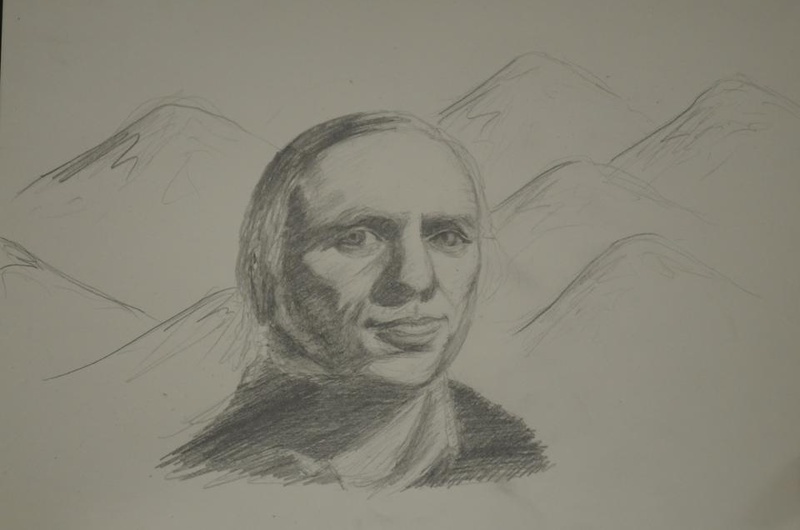Last July, Ian A. Frazier ’73 spoke to National Public Radio about his most recent nonfiction work, “Travels in Siberia.” When asked why he had ventured into the territory (five times in 16 years), Frazier replied, “Well, I think, I wanted to step out of time… You’re going somewhere, and you’re no longer just in the company of your own contemporaries. You’re in the company of everybody that’s ever traveled here.” “Travels in Siberia” is a sprawling account of Frazier’s physical journey across continents (eight time zones in Siberia alone) but also through time. The book treks through modern-day Siberia, recreated with Frazier’s perceptive prose, and through the pages of the travel accounts the author cites. Frazier, who has been a long-time staff writer and essayist for The New Yorker, received support from the publication for his travels in the region. This latest work exemplifies the sort of long-form nonfiction The New Yorker has encouraged and sustained since its inception. As Frazier’s tribute to those who journeyed across the territory before him, this epic travelogue is indicative of the nonfiction genre’s capacity to reconstruct stories, and in doing so redeem their origins.
“If plot (as we are told) equals characters, and vice versa, then maybe a similar equivalence exists between setting and genre,” Frazier writes, referencing the autobiography of Johann Schiltberger, who as a captive of Tamerlane traveled to Siberia and made the first literary reference to the place. “Schiltberger’s example leads us to expect that Siberia’s genre will be the travel story, not surprisingly, because one can’t begin to know a place that big without moving around. Sometimes the Siberian genre will also be the slave narrative, a personal account of bondage and suffering… Schiltberger also points to another, lighter Siberian genre, just as inseparable from geographic vastness—the picaresque.”
“Travels in Siberia” follows in the tradition of Schiltberger’s first mention of Siberia. Frazier’s travel story is one of an oft-failing van, a couple of sturdy, opinionated Russian guides, murderous mosquitoes in the buggy, muggy Siberian summer months, beautiful “Miss Universe” Russian women, Russian friends that share the same six names, and more eccentric moments: suddenly being waylaid by a road of watermelon sellers who shove the fruit through the open windows of the van; a beach in Vladivostok covered ankle-deep in gorgeous, sea-worn glass.
Poised and often poignant, Frazier’s prose is markedly one of detailed reportage. With the skill of a critical storyteller, he traverses the most mundane facts with ease and enthusiasm, such that even his recitation of statistics and numerous descriptions of meals (usually cottage cheese and kielbasa) compel curiosity, rather than boredom. It helps that Frazier’s often self-deprecating humor is so charming. Confronted with inevitable aphasia, the author writes at length about his intrigue with the Russian language and his struggles to communicate. Nestled in the adventures, the memoirs, and the historical data, the book’s most endearing moments rest with Frazier’s accounts of his linguistic successes and failures: the author indulges himself by proudly recounting the four times he made native Russians laugh.
Despite the comedic elements of this narrative, Frazier notes that there remains an undercurrent of sadness coursing through the territory. The author’s focus on the extensive history of Siberian exiles is unfiltered, as bleak as such an account must be. “Travels in Siberia” honors the innumerable populations sent to Siberia’s prison camps and strip mines (this punishment remained in vogue from approximately the beginning of the first tsar’s regime to the end of Stalin’s). “Travels in Siberia” is thus not only the story of Frazier’s adventure, as it manages to invite focus into the minute details of these individuals’ lives, lending veneration, but especially exposure to their hardships.
Unable to refrain from criticizing the Siberian gulag, Frazier writes beautifully, harshly, and politically about the atrocities committed there. “Using a place as punishment may or may not be fair to the people who are punished there, but it always demeans and does a disservice to the place,” he writes. Later, when Frazier encounters a deserted prison camp, he remarks on the aura of ignominy that seems to surround the place, even tucked away into the woods. “What struck me then and still strikes me now was the place’s overwhelming aura of absence,” he writes. “The deserted prison camp just sat there—unexcused, un-torn down, unexplained. During its years of operation it had been a secret, and in some sense it still was. Horrors had happened here, and/or miseries and sufferings and humiliations short of true horrors. ‘No comment,’ the site seemed to say.”
And making a comment is exactly what “Travels in Siberia” attempts to do. Near the end of the book, Frazier arguably draws a link between the government’s earlier effort to censor journalists by confiscating materials associated with the Siberian gulag and a current trend whereby Stalin’s estimation is rising in the eyes of Russia’s citizens. Frazier seems to want to resist the effacing effects of time, by carving out a place in Siberia for those who never had the chance to preserve their lives in literature. “Just as the twentieth century split the atom, it took apart the human soul; in the camps of the Siberian gulag the soul’s reduction approached the absolute,” Frazier pens. “Writers… who might have described the horrors did not survive to do so. Among those who did survive, the experience usually depleted the residue of hope in them to a level where they didn’t have much left to write with.”
—Staff writer Denise J. Xu can be reached at dxu@fas.harvard.edu.
Read more in Arts
‘Conviction’ Filmmakers Find Art in Reality













